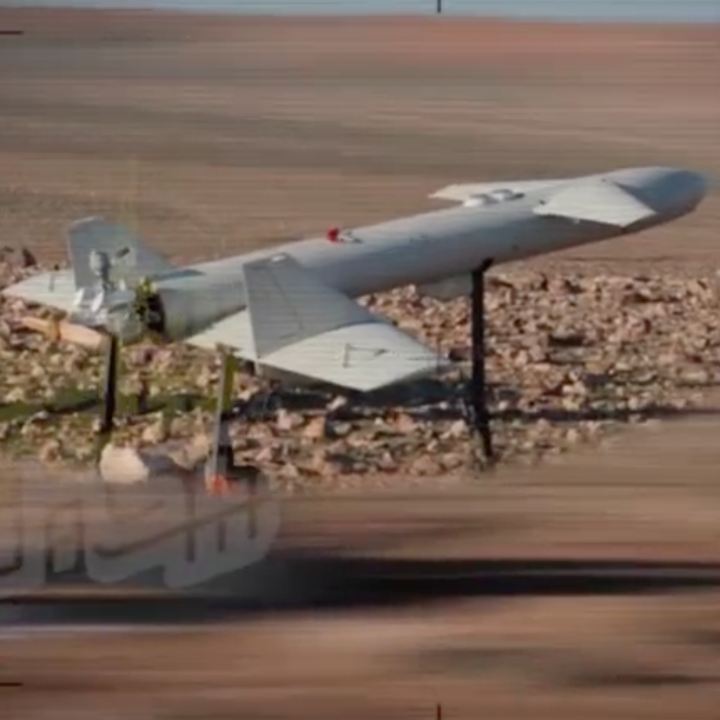
Transnational Muqawama Show Disapproval Via Warithuun Attack on al-Tanf

With probable IRGC-QF acquiescence, a militia facade group struck U.S. targets in Syria to register its defiance against a possible extension of the U.S. presence in Iraq.
On January 20, three drones struck the U.S. military's al-Tanf garrison in Syria, injuring two Syrian opposition fighters. On January 21, the Iraqi militia facade group Tashkil al-Waritheen (TW, aka al-Warithuun) issued a Telegram statement claiming responsibility for the attack. On January 24, it posted a video purportedly showing the launch of Qasef-2K drones toward al-Tanf on January 20 (see Figure 1). Although two previous drone strikes on al-Tanf have been linked to Iraqi muqawama (resistance) groups, this is the first to be claimed by a militia facade group.
TW and Attacks on U.S. Sites
TW has been identified by Militia Spotlight as a kinetic attack cell directed by Iran's Islamic Revolutionary Guard Corps-Qods Force (IRGC-QF) to undertake deniable operations from Iraqi territory. On August 19, 2022, TW claimed the August 12 attempted drone attack on a U.S. base in Kuwait, which was launched from Iraq and employed a Qasef-2K. In October, IRGC media outlets produced a wave of credible threats against the Gulf states that likewise employed imagery of the Qasef-2K. Moreover, TW's January 24 video is set to “Naqsim yaa Qasem lan Nahda,” a song associated with ambitious kinetic attacks on U.S. bases. The song's lyrics mention avenging Iranian general Qasem Soleimani and Iraqi militia leader Abu Mahdi al-Muhandis, the main motivational theme for kinetic cells operated by the Iran-backed Iraqi muqawama.
The episode seems to reveal more about TW's connections as well. Militia Spotlight assesses that TW “has a strong affiliation or command relationship" with Akram Kaabi and Harakat Hezbollah al-Nujaba (HaN), a U.S.-designated terrorist organization with a long pedigree of operations in Syria. Of note, the muqawama Telegram channel Jihad Brothers Team demonstrated access to a screenshot from the January 24 video hours before TW posted the full footage (Figure 2). Militia Spotlight has long viewed Jihad Brothers as a HaN-affiliated propaganda channel, and this episode underlines the possibility that the media organs of TW and Jihad Brothers share a connection, possibly via HaN.
Broader Political Context of TW's Claim
TW's January 21 statement is worth a close read, particularly the following passage: “No one can stop our operations in any way. We warned a lot against complacency with and kneeling in front of the American occupation in the region, and whoever does not listen to our voice demanding the expulsion of the occupiers will kneel before the bullets of our guns” (Figure 3). TW’s statement is probably a direct response to Prime Minister Mohammed Shia al-Sudani’s recent announcement in which he called the United States “friends” and noted that U.S. forces could remain in Iraq to train and equip the country's military. Even the muqawama faction most involved in running today’s Iraqi government—Asaib Ahl al-Haq (AAH)—hinted that it seeks possible rapprochement with the United States. These statements were at odds with long-held muqawama demands for confronting and expelling U.S. forces.
In that sense, the Tanf attack might underline a developing schism or division of labor between the more politically minded and Iraq-focused muqawama (e.g., AAH and the Badr Organization) versus the transnational muqawama who remain outside formal politics (e.g., HaN). Both the attack itself and the subsequent communique were likely a joint HaN-TW action that was permitted by IRGC-QF. Receiving the go-ahead from the IRGC was probably required due to the use of higher-end Iranian Qasef-2K drones and the selection of a U.S. target.
Meanwhile, with six seats in parliament through their Harakat Hoquq list, politicians representing the militia Kataib Hezbollah (KH) are in the most difficult position and have sought to argue on al-Nujaba TV that U.S. withdrawal might be an eventual goal, as opposed to an immediate priority. Last year, KH followed TW’s August 12 drone attack on the U.S. base in Kuwait with an August 15 drone attack on U.S. forces at al-Tanf. Notably, there has been no apparent KH-linked sequel (so far) to TW’s January 20 strike. If these circumstances hold, it may signal that KH is playing along with the idea of de-escalation against the United States, at least for now.








